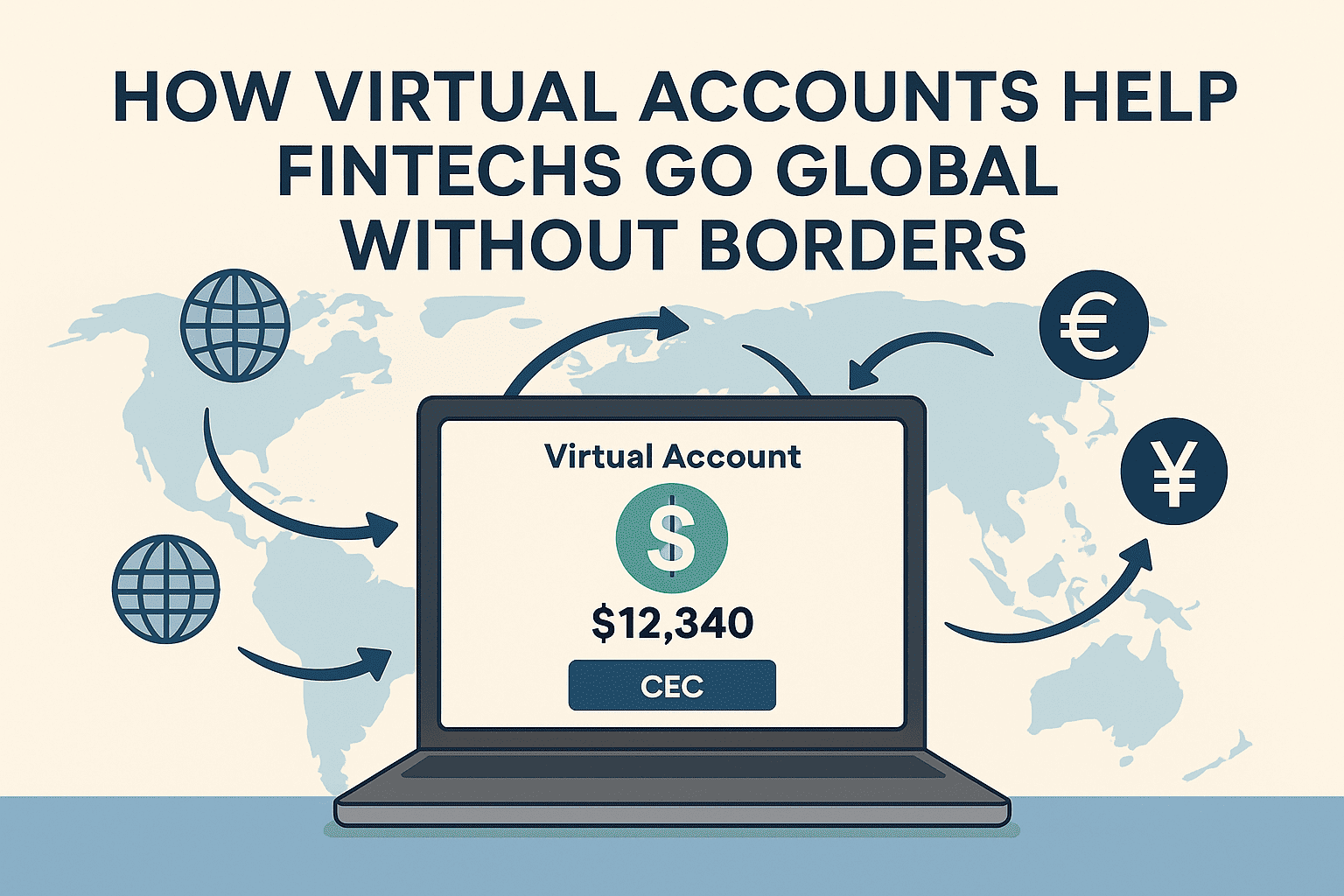
In today’s hyperconnected world, fintechs are scaling faster than ever, serving users, merchants, and partners across multiple continents. But while the software may scale globally, payments rarely do.
Traditional banking systems are still fragmented by geography, compliance, and currency barriers. That’s where virtual accounts come in; offering a borderless alternative that enables global money movement without the need to open physical bank accounts in every country.
In this guide, we’ll break down how virtual accounts work, why they matter, and how fintechs are using them to build truly global platforms.
What Is a Virtual Account?
A virtual account is a unique, dedicated bank account number assigned to a business or end user, without being tied to a physical bank branch.
These accounts:
- Can receive (and sometimes send) payments like a regular bank account
- Are often issued by licensed banking-as-a-service or fintech infrastructure providers
- Sit “under the hood” of a master pooled account at a regulated institution
In short, they give your users the experience of having a local account, without you having to open one in their country.
Why Fintechs Need Virtual Accounts to Go Global
Expanding into new markets traditionally meant:
- Navigating local banking relationships
- Opening foreign bank accounts
- Handling compliance, KYC, and FX risks in each country
With virtual accounts, fintechs can sidestep these challenges and scale faster. Here’s how:
1. Faster Market Entry
No need to wait 6–12 months to open a local bank account or negotiate with multiple PSPs. Virtual accounts let you go live in new markets in days, not months.
2. Localized Experience
Give users local account numbers (e.g., IBAN in Europe, CLABE in Mexico, CBU in Argentina), which improves trust, reduces payment friction, and boosts conversion.
3. Seamless Reconciliation
Assign unique virtual accounts per customer, transaction, or vendor. This makes automated reconciliation easy — especially for platforms managing thousands of users.
4. Simplified Treasury and Settlement
Collect in local currency, settle globally in USD, EUR, or stablecoins. No more juggling dozens of bank accounts and FX providers.
5. Built-In Compliance
Virtual account issuing platforms like Yativo handle underlying AML, transaction monitoring, and local regulatory needs — freeing your team to focus on product and growth.
Real-World Use Cases
Fintechs around the world are already using virtual accounts to solve real problems:
| Use Case | Solution |
|---|---|
| B2B Platforms | Assign virtual accounts to merchants for collecting payments in multiple currencies |
| Crypto On/Off Ramps | Link virtual accounts to wallets for seamless fiat conversion |
| Global Payroll | Automate salary disbursements with account-level tracking per contractor |
| Marketplace Escrow | Hold funds per user with clear incoming/outgoing transaction visibility |
How Yativo Virtual Accounts Power Borderless Growth
Yativo offers a next-generation virtual account infrastructure built for scale. With one integration, your fintech can:
- ✅ Open local accounts in multiple countries (CL, MX, BR, US, SG, AR)
- ✅ Accept payments via local rails like SPEI, Pix, or bank transfers
- ✅ Receive settlement in stablecoins or major currencies
- ✅ Create dynamic virtual accounts per user, transaction, or product
- ✅ Stay compliant with embedded KYC, monitoring, and reconciliation
Unlike legacy banking partners, Yativo is API-first, compliance-ready, and built for global fintechs expanding across emerging markets.
Final Thoughts
In a world where money moves globally but banking remains local, virtual accounts are the bridge. They give fintechs the flexibility to scale without borders — powering faster launches, better user experiences, and smarter treasury ops.
If your fintech is ready to enter new markets without the burden of setting up local entities and bank accounts, virtual accounts are not just an option — they’re a competitive advantage.
Explore Yativo Virtual Accounts → Learn more
Frequently Asked Questions
What’s the difference between a virtual account and a regular bank account?
A virtual account is not held at a physical branch but provides a dedicated bank account number for receiving and tracking payments, typically under a master regulated account.
Can users withdraw funds from a virtual account?
Yes — depending on the provider, funds can be withdrawn via local transfers, card issuing, or crypto rails.
Are virtual accounts legal?
Yes. When provided by a regulated financial institution or through a licensed infrastructure provider like Yativo, they fully comply with local and international regulations.